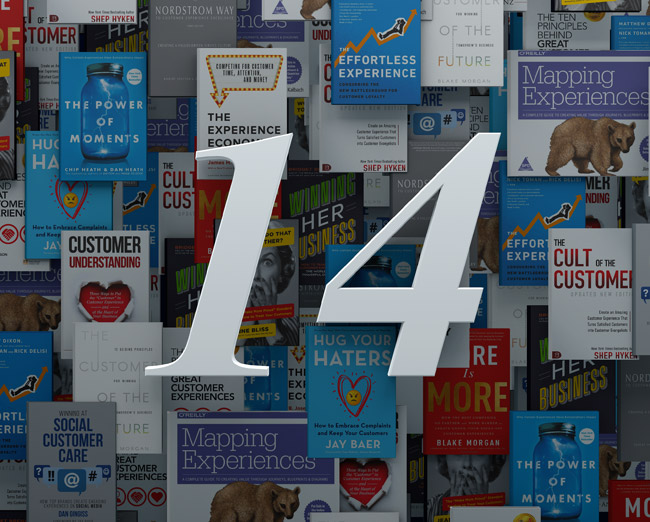How to Calculate Customer Lifetime Value—And Improve It!
All businesses survive and thrive on having customers, and a lot of effort goes into acquiring and retaining them. But how do you know the value of your customers in terms of profitability over their lifetime with your company? Calculate customer lifetime value.
What Is Customer Lifetime Value?
What is customer lifetime value (CLV)? Customer lifetime value is the amount of money a customer is expected to spend with your company (buying products or services) over their lifetime with your company. CLV is also known as CLTV and sometimes LTV. Essentially, it is an educated estimate of the amount of profit you earn from a customer relationship. The CLV works best for companies that have multi-year relationships.
You can measure CLV for all your customers. However, this approach works best if you only have a couple of products close in value or customer segments. A better approach is to determine lifetime value for individual personas, customer segments, or cohorts. Measuring CLV by customer segments gives you deeper insights into which customer segments are most profitable.
Measuring customer lifetime value is essential for a few reasons, including:
- How much do you need to spend to acquire a customer and still make a profit?
- Budgeting spends on marketing, sales, customer support, and customer service.
- Determining your most profitable customers.
- Determining your most profitable products and services.
You typically calculate CLTV using historical data, but you can also use a predictive model that considers customer churn.
How to Calculate Customer Lifetime Value
There are a few formulas out there that help you calculate customer lifetime value, some basic, others more in-depth, but they all follow the same general formula:
CLV = Average Order Value (AOV) X Average Purchase Frequency Rate (AFR)
- Average Purchase Value is the average revenue you make for each purchase in a year (Total Revenues / Total purchases).
- Average Purchase Frequency Rate is total purchases divided by the number of unique customers in a year.
For example, let’s say your business sells high-end women’s shoes. In a single year, you sell 5,000 pairs of shoes to 3,500 customers earning revenues of $1,050,000. Using the formula above:
- CLV = (1050000/5000) X (5000/3500) = $210 X 1.43 = $300
- So your CLV is $300 per customer per year.
- Let’s take this a step further and factor in the costs to make those shoes.
- CLV = AOV x AFR X Gross Margin
- Gross Margin is the amount of profit you earn after the costs of making the product are removed, Revenues – Cost of Goods Sold (COGS).
For our shoe example, let’s assume it costs an average of $50 to make a pair of shoes ($250,000 to produce 5,000 pairs of shoes).
- Gross Margin = (1050000 – 250000)/1050000 = .76 or 76%
- CLV = $210 X 1.43 X .76 = $228
Not everyone agrees that you should include Gross Margin in the CLV calculation because costs to make products fluctuate, but if your costs don’t fluctuate greatly, then it’s good to include it.
Another aspect that you can bring into the CLV calculation is Churn Rate (the percentage of customers that leave you over a defined period). By adding Churn Rate into the calculation, you are performing predictive analysis.
Churn Rate = (Lost Customers ÷ Total Customers at the Start of Time Period) x 100.
In our example, 250 people only make one purchase over their lifetime, so Churn Rate = (250/5000) X 100 = 5%
Adding Churn Rate into the calculation we get:
- CLV = AOV x AFR X Gross Margin X Churn Rate
- CLV = $210 X 1.43 X .76 X (1/.2) = $1.141.14
The last thing to consider when calculating customer lifetime value is customer acquisition costs (CAC). CAC is the amount of money you spend to acquire a customer. Adding CAC to your CLV calculation gives you a more accurate view of your profit from each customer.
CAC = Costs associated with converting a customer / the number of customers acquired. Costs include spending by marketing and sales.
For our example, let’s assume marketing spends $650,000 per year, making CAC equal to $130 (650000/5000).
- CLV = (AOV x AFR X Gross Margin X Churn Rate) – CAC
- CLV = ($210 X 1.43 X .76 X (1/.2)) – $130 = $1.141.14 – $130 = $1011.14
The above calculations are done using an overall average of revenues and don’t consider that each type of shoe sold costs a different amount with different gross margins. It also doesn’t look at the types of customers that purchase from you (segments that buy lower-end shoes versus customer segments that purchase higher-end shoes).
Consider that someone who buys lower-end shoes may purchase several pairs of shoes a year, whereas someone who buys high-end shoes might only purchase a single pair over several years. Which type of customer is more profitable for you? The only way to know is to calculate CLV separately for each segment.
How to Improve Customer Lifetime Value
Knowing customer lifetime value is half the challenge. Putting programs and activities in place to improve it is the second part. Improved CLV directly affects revenue and reduces acquisition costs.
There are a lot of ways you can improve CLV. Some relate to the acquisition, and some relate to retention. The following are a few ways you can improve CLV.
If you are an ecommerce company, you can:
- Make it easier to buy from you by finding ways to streamline the checkout process.
- Offer bundles at a discounted rate to increase the amount purchased during a single order.
- Provide additional related offers as a customer goes through the checkout process (usually at a discount).
- Send follow-up emails with new offers or special deals during certain times of the year.
- Create a loyalty program that includes discounts, early notice of sales, or special deals.
- Create a customer feedback program that regularly surveys your customers to get their opinions on your products.
- Make it easy to do returns or exchanges.
If you are a SaaS company, some ways to improve CLV include:
- Offer free trials or subscription levels based on usage.
- Optimize the onboarding process, making it easier for a customer to get set up (provide virtual training, guided tours, templates, easy access to support through email or phone).
- Create a regular communications program that sends customers information to help them use the service (monthly customer newsletter, how-to blogs or videos, etc.).
- Conduct regular customer satisfaction surveys to understand what’s working and what’s not, including how you can improve your service to keep your most profitable customers happy.
- Collect customer feedback on most-wanted features so you can focus on the enhancements that keep customers happy or upgrade them to the next level.
- Offer personalized content based on where a customer is in their journey with your application (onboarding, using for a month, using for a year, subscribed but not actively using).
- Offer add-on services or upgrades to the next version at a discount.
Measuring customer lifetime value is key to your company’s success. While you can calculate it for your business overall, the best approach is to separate your calculation by some unique identifier, such as persona, segment/cohort.
Related Solutions and Resources

Retail Leadership Study: Retail CX and Data Strategies
Retailers are investing heavily in personalized CX and Customer Data Platforms…

14 Essential Customer Experience Books to Help You Rethink Your CX
What will be the “new normal” for retail, brands, and businesses of all kinds for the rest of 2020 and…

Forbes Insights Report: Proving the Value of CX
Learn how to place customer experience at the center of your business.

Bridging Physical and Digital Data
Combining Cross-Channel Shopper Insights for a Competitive Edge…